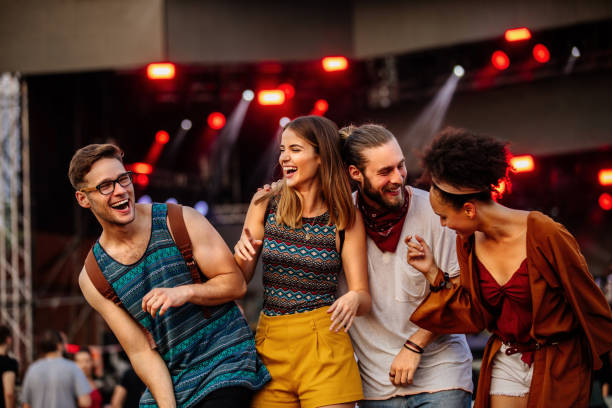How Dance Can Relieve Stress and Help Us Heal From COVID-19
As mental health issues increased in the United States during the COVID-19 pandemic, interest in art-making has also expanded—offering ways for us to creatively cope with the new uncertainty and restrictions of daily life.
While some unprecedented health effects of isolation and lockdowns, such as PTSD and loneliness, have emerged during COVID, so too have creative alternatives and interventions recommended by healthcare professionals to help their patients and community members.
These arts and aesthetic experiences range from drawing sessions to dance classes, museum visits to the theater, and more.
But how does dancing specifically work toward managing, rebuilding, or even healing us from a collective and traumatic experience like COVID?
COVID Rapidly Reframed Our Experiences With Gathering and Creating Together
“The experience of COVID has changed your nervous system,” says Shira Karman, a body-oriented psychotherapist and adjunct professor of dance movement therapy and psychotherapy at Lesley University. “It’s not just an emotional reaction. We’re having a biological reaction. Our nervous systems are being changed by the messages ‘don’t touch [each other].”
In repeatedly hearing these reminders to socially distance, wear masks, and avoid large gatherings at the height of COVID, coupled with an increase in anxiety and fear of infection, dancing and other group activities seemed like an impossibility—until virtual gatherings quickly became commonplace.
As isolation and lockdowns gave rise to reports of domestic and child abuse in countries such as China, researchers Dr. Ilene Serlin and Grace Zhou focused on a group of hotline callers contending with anxiety and abuse fears in Beijing, as well as the hotline’s counselors and psychologists monitoring the counselors experiencing their “own exhaustion” and “caregiver burnout.”
They recommended dance movement therapy (DMT) for the hotline callers as well as the psychologists to help them process the trauma they were experiencing.
Serlin and Zhou designed “Zoom Tool Kits” that used DMT techniques for the hotline callers and supervisors to feel safe and understood in a virtual space.
In watching a video series created by Serlin and Zhou, participants learned to mirror the movements of others and regain a sense of emotional grounding. “As the emotions are embedded in symbolic movements, such as reaching upward for hope or vigorously reaching down to plant the seeds, the participants had a chance to experience emotional shifts without needing to name or share them verbally with others,” note Serlin and Zhou. “This can allow for greater freedom of expression and release.”
How Dancing Communally Can Build Back Connection and Community
While dancing may help us individually process our COVID experiences, it could also positively reframe our social identity in a communal setting—whether virtually or in person beyond COVID.
Karman points to the advantages of using dance to process the pandemic, which involves the body’s neurons related to empathy, known as mirror neurons: “They help us learn both skills and social behavior,” notes Karman. “One of the things that dance movement therapy used early on in the profession was this idea of mirroring in movement, and we have an understanding of why that can be so powerful. You are building trust without conversation. It’s a profound experience to have someone actually pay attention to you deeply enough to follow your movement.”
We now know that dancing alone at home—even for five minutes—can improve emotional well-being, but research also shows that dancing in a virtual or in-person group also has benefits. When moving with others, we experience neural synchrony which lets us feel more connected to each other in a group setting.
In analyzing a group of high schoolers dancing together, one study noted that “two key elements—synchronization and exertion—independently elevate pain thresholds and encourage bonding” in an in-person setting. Through bonding, dance can provide a social safety net for others to feel seen and understood. “You’re not doing a solo experience anymore,” says Karman. “It builds the safety—the emotional, physical mirroring that ‘I’m understood’ and ‘I understand you.’”
Recognizing that some participants may have greater proficiency in dance than others when gathering, a 2022 report authored by Dr. Julia C. Basso and colleagues at Virginia Tech University highlighted the benefits of taking part in just one dance class: “Regarding dance history, our data revealed that the most novice dancers (i.e., those with the fewest years of dance experience) experienced the largest gains in positive affective state.” The authors of the report, which analyzed findings from a virtual dance program in the U.S., noted that “this is one of the first reports to examine the association between dance history and changes in mental health after a single session of online dance.”
The Health Benefits of Dancing Together
Of course, there are noted physical benefits too: Dancing can help reduce cortisol levels, alleviate stress, and even maintain and improve balance. Several dance companies and studios took their offerings online, including Dance For PD, which also went viral and created a safe space for participants with Parkinson’s disease to feel connected, empowered, and engaged, as well as their families.
Dance to Health, a dance program designed to prevent injuries from falling in older populations in the United Kingdom, fully moved online during COVID and saw a 58 percent reduction in injuries, according to its 2020 report, which was then highlighted in the Aspen Institute and Johns Hopkins University’s NeuroArts Blueprint.
As psychiatrist Carl Jung noted, “Loneliness does not come from having no people about one, but from being unable to communicate the things that seem important to oneself.”
As we continue to process COVID-19 and its effects on society, the benefits of mirroring and moving with each other may ultimately help us reconnect to ourselves and those in our communities. And incorporating more movement and dance into our lives may just help us move toward healing from the pandemic—together.



